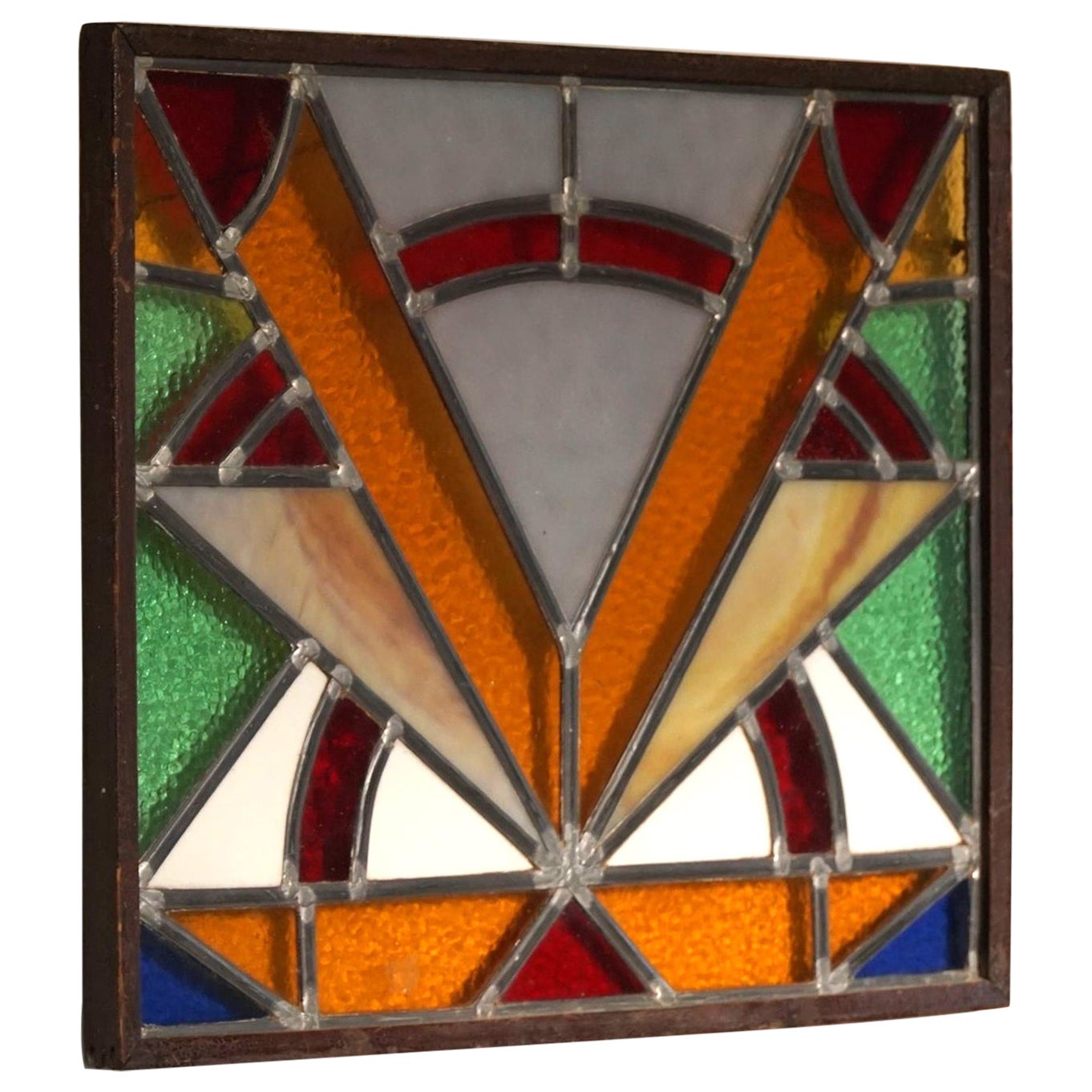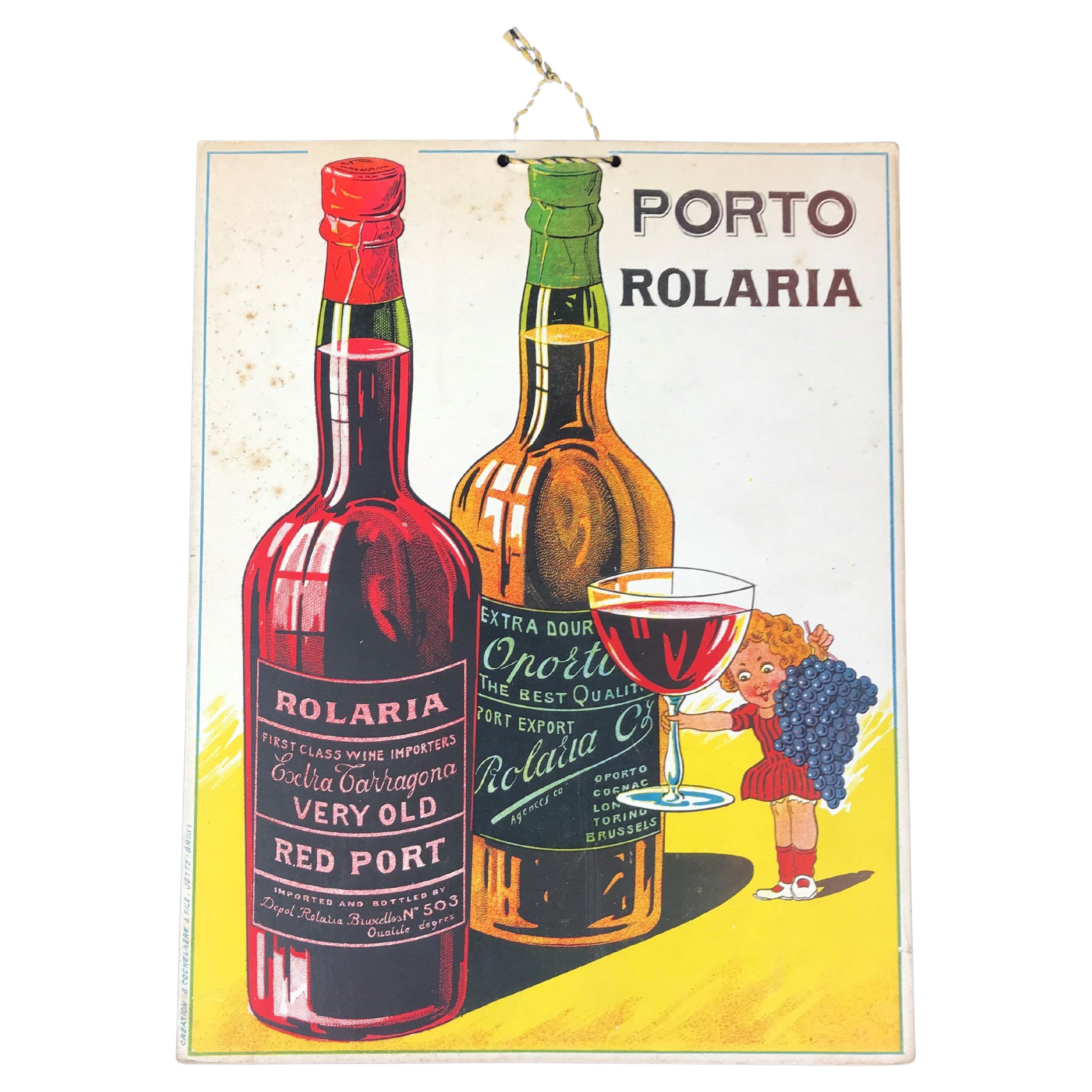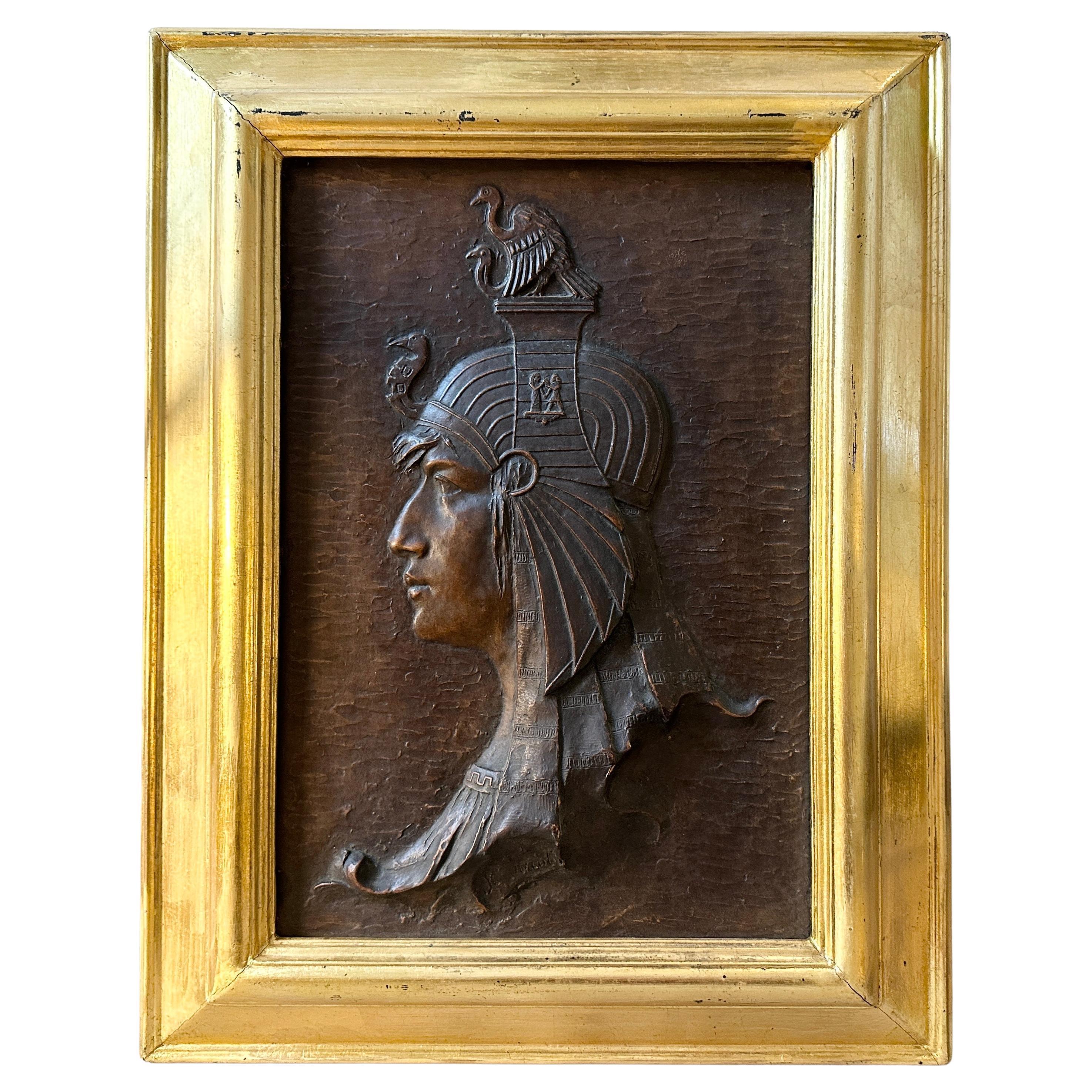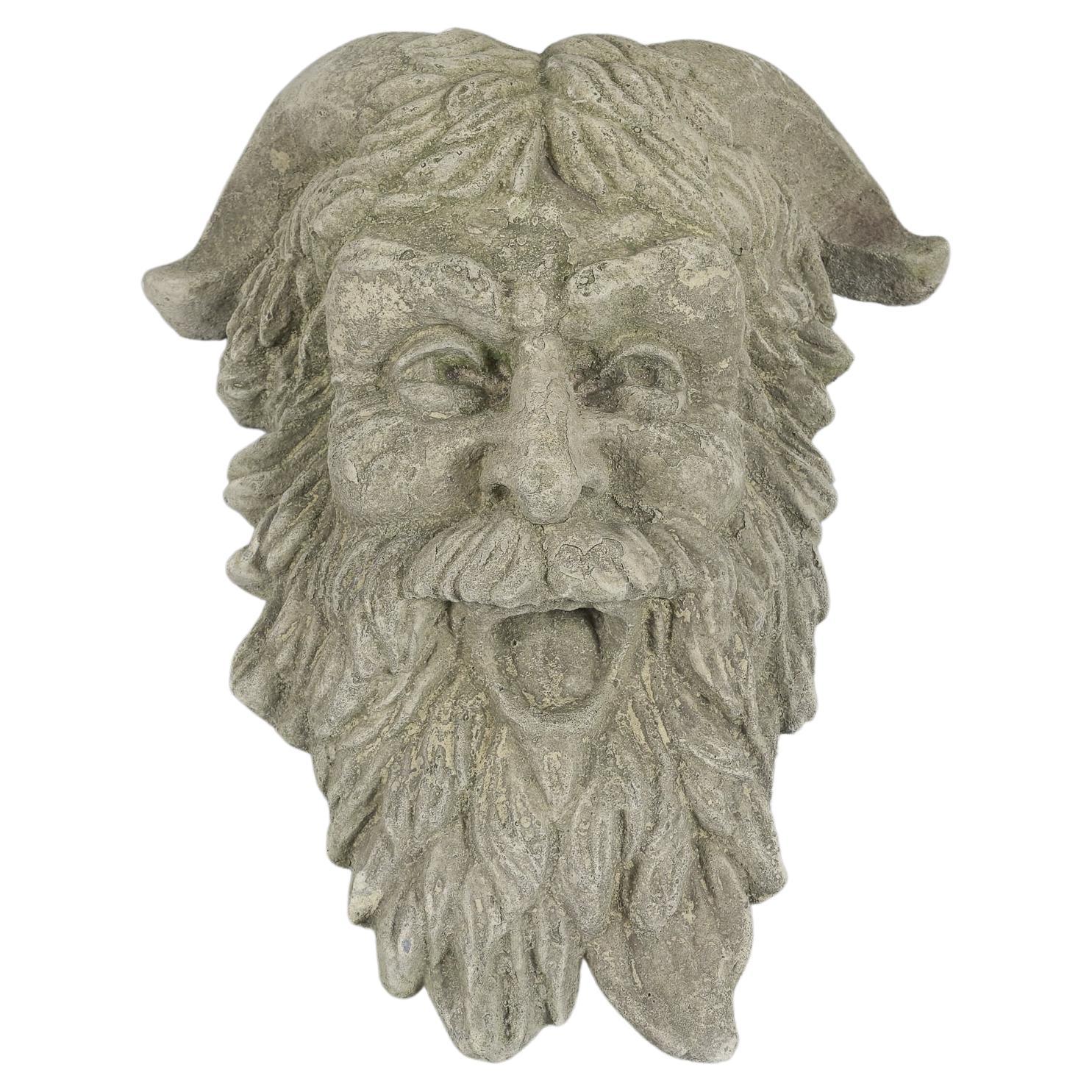Items Similar to Roberto Rosati, Italian Futuristic Art Deco Majolica Wall Plate, ca. 1930s
Want more images or videos?
Request additional images or videos from the seller
1 of 12
Roberto Rosati, Italian Futuristic Art Deco Majolica Wall Plate, ca. 1930s
About the Item
This large and stunningly beautiful hand-painted futuristic Art-Deco majolica wall plate by famous Italian ceramist, Roberto Rosati depicts a peasant woman in a sunlit field during harvest. Gracefully bending down, with a disobedient lock of hair knocking out from under her kerchief, she cuts off handfuls of wheat with a sickle.
This unique plate possesses several outstanding qualities at once - most unexpected artist's vision, elegant minimalistic composition and discreet decorativeness, exceptional workmanship; and, especially, the absolutely non-trivial color palette of brown, black and white silhouette of a peasant woman against background of gold and semi-opaque pale yellow paints, laid on the majolica surface with bold and precise strokes of a real master.
Attribution
Signed (front center) with stylized monogram “R” and inflorescence of shamrock below; and (back) “RSCVOLA D’ARTE GIROTTAGLIE”.
Dimensions
Diameter: 18.5 inches (46.25 cm)
Height: 18.5 inches (46.25 cm)
Condition
The plate is in good antique condition consistent with age and use. However, a museum-quality restoration is present – as the frontal surface of the plate looks perfect, without any visual restoration traces; the back of the plate shows obvious traces of previously executed restoration, probably done no less than at least 50-60 years ago.
Roberto Rosati (Rome, 1889 – 1949), a native of Rome, was one of the most talented ceramists of his generation, following the futuristic direction in art. In 1925, Roberto Rosati was called by Giuseppe Rodriguez, famous Roman ceramics maker and school owner to teach artistic ceramic painting in his laboratory and the ceramic school, located in Rome at via S. Maria in Cappella, 11; where he taught for several following years. Despite the heavy workload and being constantly surrounded by numerous students, he nevertheless finds time for creation of his own very original works, and participation in exhibitions.
The peculiarity of the Italian art "production" of the interwar years, which is best known, is its comparative liberality against the background of Germany and the USSR. The Futurists were among the first supporters of Benito Mussolini and therefore could work as they wished; rationalist architects close to the international modern movement also received government orders, as well as adherents of metaphysical painting, "Novecento" coexisted with them very well.
In 1937, Roberto Rosati, already a venerable and well-known ceramist by that time, was invited to take the position of director of SCUOLA D'ARTE GROTTAGLIE, founded in 1887. Still existence today, it is now called Istituto d'Arte Grottaglie (via Jacopo della Quercia, 1, 74023 Grottaglie, Puglia, Italy). For centuries, Grottaglie, a small town in the province of Taranto in Puglia, has been the site of flourishing artisanal ceramic production closely linked to the richness of the clay, typical of this region. The art of ceramics in Grottaglie has a very long history, as demonstrated by the magnificent finds displayed in the Ceramics Museum, with its roots stretching back to the Medieval period. Figurine ceramic craft, which was the driving force of life and commerce in Grottaglie for centuries, is represented in the museum by approximately 400 items spanning a time period from the eighth century B.C. to the present day.
The years spent by Roberto Rosati as school director until his death in 1949 fell on a very important historical moment in Italian history - the heyday and further decline of the dictatorial fascist rule of Mussolini; which was also one of the brightest periods in the development and formation of future Italian art after the Renaissance.
For a long time, there was no talk at all about the official style of the regime, and there was always a varied private order. However, it should be remembered that rationalists emphasized their connection with tradition, which was unimaginable for most foreign modernists of those years, and futurism after the First World War changed significantly, changing the "composition of participants" and becoming less radical and ready to create according to the demands of the time. Time called for "return to order" throughout Europe. But it was in Italy that this appeal to tradition, reality, and history acquired distinct features of "construction", which can be compared with postmodern experiments, up to irony, for example, in arts and crafts in general and in ceramics in particular.
But even quite serious artists, such as, Rosati, who claimed a unique sense of taste, form, beauty inherent only to Italians, and reminded of the achievements of the Renaissance masters, eventually created conglomerates, where it is clearly read: the time of the "classics" has irrevocably passed away already in the 1920s.
Everyday Italians, as well as intellectuals referred to the great Italian art of the past, but each time you look at these statues and canvases, one does not leave a feeling of the artificiality of this play of forms, postmodern "modernization" of the classics. And here the perspective is clear further - to post-war, often more lively and honest experiences.
- Creator:Roberto Rosati (Artist)
- Dimensions:Height: 1.5 in (3.81 cm)Diameter: 18.5 in (46.99 cm)
- Style:Futurist (Of the Period)
- Materials and Techniques:
- Place of Origin:
- Period:
- Date of Manufacture:circa 1930
- Condition:Repaired: A museum-quality restoration is present – as the frontal surface looks perfect and without visual traces of repairs; the back shows obvious traces of an old restoration done, probably, no less than at least 50-60 years ago. Wear consistent with age and use. We make our best effort to provide a fair and descriptive condition report. Please examine the photos attentively, as they are an integral part of the description. Send us a message to request more details or discuss price.
- Seller Location:New York, NY
- Reference Number:1stDibs: LU2819326760552
About the Seller
5.0
Vetted Seller
These experienced sellers undergo a comprehensive evaluation by our team of in-house experts.
Established in 1993
1stDibs seller since 2017
68 sales on 1stDibs
Typical response time: 2 hours
- ShippingRetrieving quote...Ships From: New York, NY
- Return PolicyA return for this item may be initiated within 10 days of delivery.
More From This SellerView All
- Japanese Art Deco Ikebana Chromed Metal Basket, ca. 1930sLocated in New York, NYArt Deco Ikebana Basket Chromed Metal Japan, ca. 1930s ABOUT Ikebana is the Japanese art of of beautifully arranging cut stems, leaves, and flowers in vases and other containers t...Category
Vintage 1930s Japanese Art Deco Planters, Cachepots and Jardinières
MaterialsMetal
- Hendrik Scholter, Capitalist & Proletarian, Dutch Art Deco Bronze, ca. 1930sBy Hendrik ScholterLocated in New York, NYDIMENSIONS Height: 9.5 inches Width: 6.5 inches Depth: 3.75 inches MARKINGS Brown-patinated bronze, inscribed on base: H. ScholterCategory
Vintage 1930s Dutch Art Deco Figurative Sculptures
MaterialsBronze
- American Streamline Art Deco Grand Lucite Floor Table Lamp, ca. 1930sLocated in New York, NYABOUT This magnificent floor lamp or table lamp of the American Streamline Art Deco period floor lamp or table lamp is made with bound Luc...Category
Vintage 1930s American Art Deco Floor Lamps
MaterialsLucite
- Bernhard Sopher, Seated Nude, Art Deco Patinated Bronze Sculpture, Ca. 1930sBy Bernhard SopherLocated in New York, NYSigned on the base: ‘B. Sopher’ Well-preserved original dark brown patina. Dimensions: Height: 7.5" Width: 8" Depth: 7" Bernhard (Burnat David) Sopher (1879 – 1949) was a German-American sculptor. He was born in Safed, Syria and studied sculpture at the Berin Art Academy from 1897; and from 1905 to 1908, at the Weimar School of Crafts with Adolf Brutt in Berlin and Weimar. At the end of his studies, he was already involved in the realization of the monument to Grand Duke Carl Alexander...Category
Vintage 1930s American Art Deco Figurative Sculptures
MaterialsBronze
- American Art Deco Chromed Metal Table Lamp w/ Leather Insert Stem, ca. 1930sLocated in New York, NYAmerican Art Deco Table Lamp Chromed Metal & Leather ca. 1930s ABOUT Art Deco table lamps are a classic and elegant addition to any home, thanks to their sleek, geometric shapes a...Category
Vintage 1930s American Art Deco Table Lamps
MaterialsMetal, Chrome
- Fred Press, American Art Deco, Painted Plaster Bust of a Faun, ca. 1930sBy Fred PressLocated in New York, NYSigned ‘Fred Press’ on back FRED PRESS (American, 1919 – 2012) was born to Samuel and Rose Press, who emigrated from Russia in the early 1900’s. He was the fourth of five children. He was married to Alice Bernadette for over 60 years and they had three children, David, Peter and Christopher. At an early age Fred showed his sculpting prowess as the Ivory Soap contest winner in the early 1930’s. During his contemporary stage, he created numerous sculptures with bold design choices and unique subject matter. Fred’s sculptures reflect both historically significant figures and time periods but he also showed a more fanciful side with sculptures depicting mythical folklore using the likeness of some of his relatives. His subject matter also reflected the people and cultures he came into contact with while a member of the Sixth Air Force Division stationed in the Panama Canal Zone...Category
Vintage 1930s American Art Deco Busts
MaterialsPlaster
You May Also Like
- 1930s Art Deco copper wall hanging, NetherlandsLocated in London, GBAn Art Deco hammered copper plate from an unknown Dutch art school.Category
Vintage 1930s Dutch Art Deco Decorative Art
MaterialsCopper
- Art Deco, Colored Glass, Decorative Wall Art, Scandinavian Artist, 1930sLocated in Odense, DKA decorative glass wall art piece. A colorful plate in many variations that gives a magical atmosphere when light falls and changes the color palette in...Category
Early 20th Century Scandinavian Bohemian Mounted Objects
MaterialsZinc
- Art Deco Port Advertising Sign, 1930sLocated in Antwerp, BEArt Deco port sign of Porto Rolaria. Old advertising sign for the aperitif drink Port - Porto. What a beautiful design: 2 bottles of Port:...Category
Mid-20th Century Belgian Art Deco Signs
MaterialsPaper
- "Family in Italy, " 1930s Art Deco Wall Charger with Father, Mother and SonLocated in Philadelphia, PAStrikingly composed and beautifully glazed, this large wall charger -- designed with display in mind -- features the idealized Italian family as res...Category
Vintage 1930s Italian Art Deco Decorative Art
MaterialsCeramic
- 1930s Art Deco Gilded Wood Framed Italian Plaster Bas-ReliefLocated in Aci Castello, ITAn Art Deco gilded wood framed Bas-Relief Plaster depicting an antique Egyptian hand-crafted in Italy in the Thirties which represents a stunning fusion of artistic influences and cr...Category
Early 20th Century Italian Art Deco Decorative Art
MaterialsGiltwood, Plaster
- Large and Heavy Devil Wall Mask in Concrete, 1930s Art DecoLocated in Nürnberg, BayernHeavy vintage devil wall mask in conrete, 1960s. Beatiful Patina, little.Category
Vintage 1930s Italian Mid-Century Modern Figurative Sculptures
MaterialsCeramic
Recently Viewed
View AllMore Ways To Browse
Art Deco Gold Plates
Antique Wall Art Art Deco
Antique Wall Art Deco
Wall Statue
Art Deco Plate Germany
German Art Deco Plates
Roman Art Deco
Art Deco Antique Plate
Medieval Period
Wheat Wall
Italian Renaissance Plates
Antique Small Decorative Plates
Used Furniture Orange Ca
Roman Antique Plates
Black And White Decorative Plates
1939 Appeals
Knock Down Furniture
1930s Gold Link





